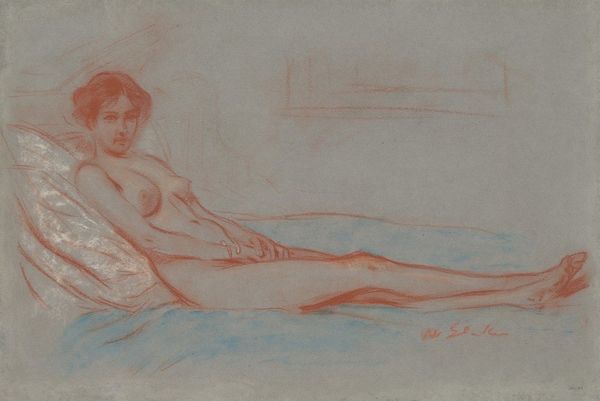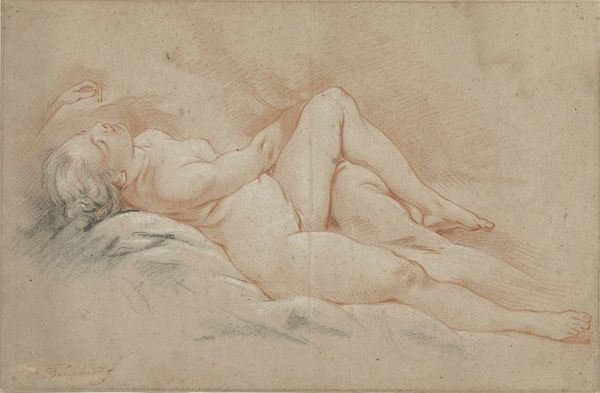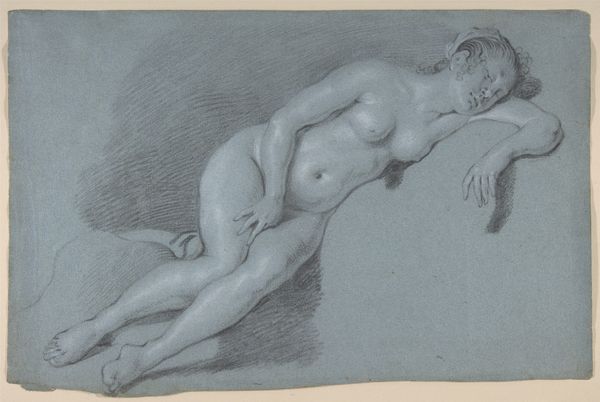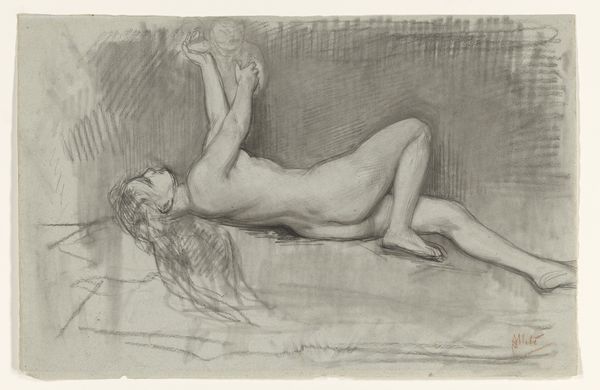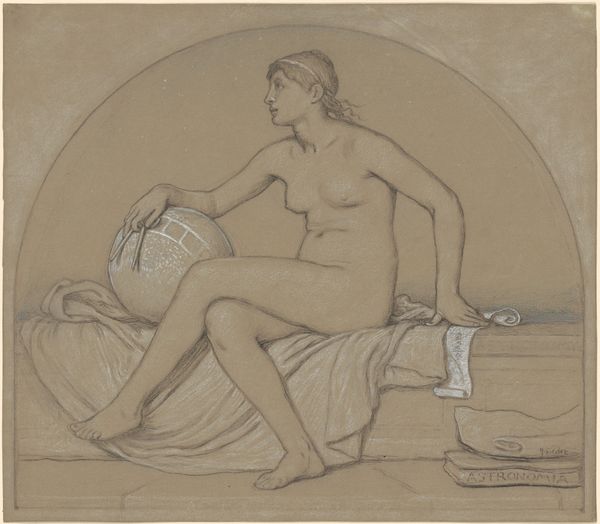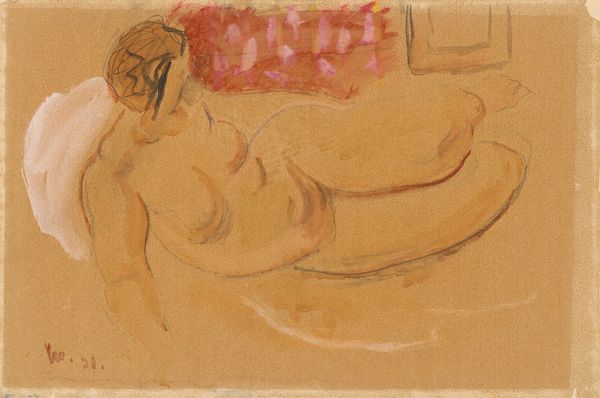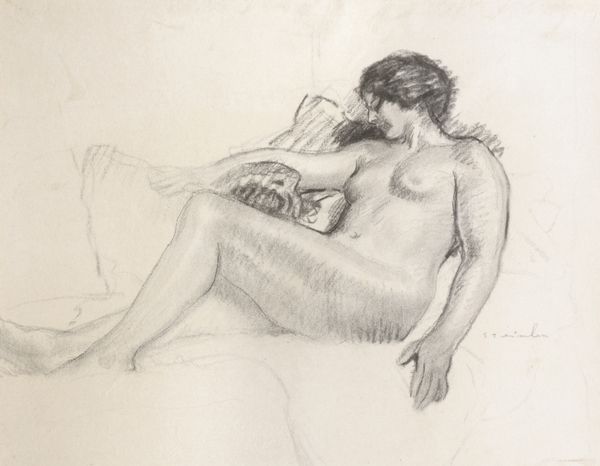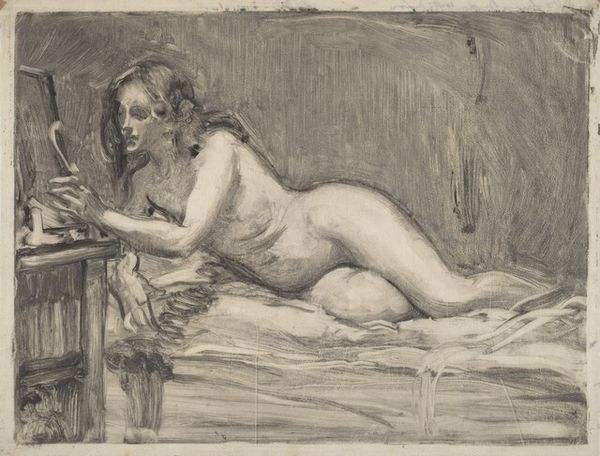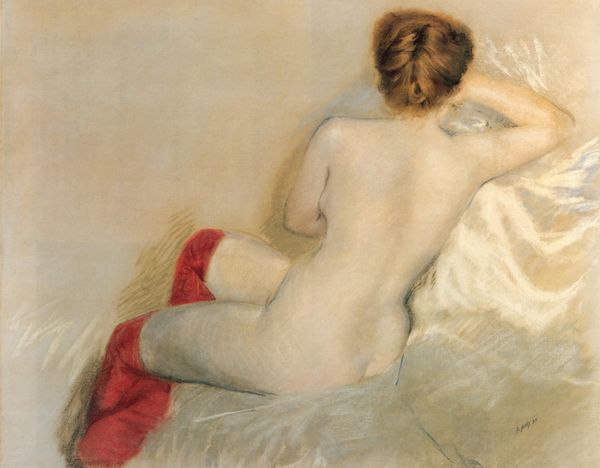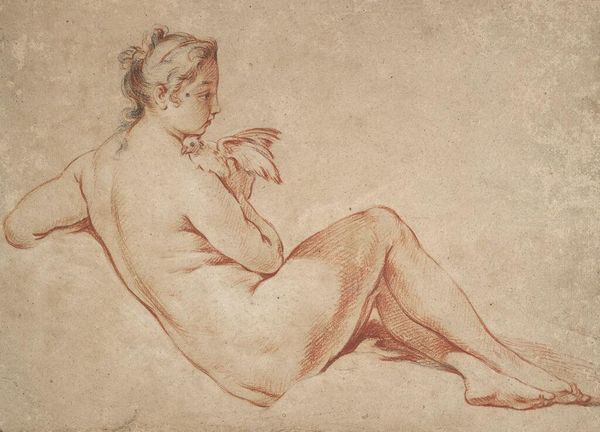
Copyright: Public Domain: Artvee
Editor: So, this is "The Remedy" by Jean-Antoine Watteau, created sometime between 1716 and 1717, using charcoal and pastel. I'm struck by the sense of intimacy and fragility conveyed through the delicate lines. What do you see in this drawing? Curator: I see a sophisticated arrangement of line and form. Note the dynamism in the contrast between the reclining figure and the vertical lines established by the standing figures on the right. This creates a spatial tension. The artist seems interested in the relationships between lines, focusing more on the interplay between contrasting sections and dynamic execution rather than on telling an actual narrative. Editor: That's a great point! I was focusing on the narrative aspect, but the composition is really compelling. Do you think the medium contributes to the overall impression? Curator: Undoubtedly. The choice of charcoal and pastel lends itself to this immediacy. Note how the textures are defined less by strict contours and more by layered strokes. Editor: It's amazing how Watteau uses such simple means to achieve such a nuanced effect. Is there a hierarchy in the marks that Watteau leaves in his wake as an artist? Curator: The application is rather balanced to build out texture. The layering allows areas of deeper tone. It appears like there is an equal importance applied to both tonal and linear information. Note how light and shadow model the form, creating a sense of volume and depth, despite the relatively flat surface of the paper. The drawing offers an elegant example of the expressive capabilities of line. Editor: I never considered that before! I see how focusing on the relationships between forms and tones changes the entire feel of the piece. Curator: Yes. By examining these qualities, we can start to consider how art functions beyond any possible subject material. Editor: Well, thanks for shedding a light on this; I think I have a richer understanding now of what constitutes a drawing of that time.
Comments
No comments
Be the first to comment and join the conversation on the ultimate creative platform.


